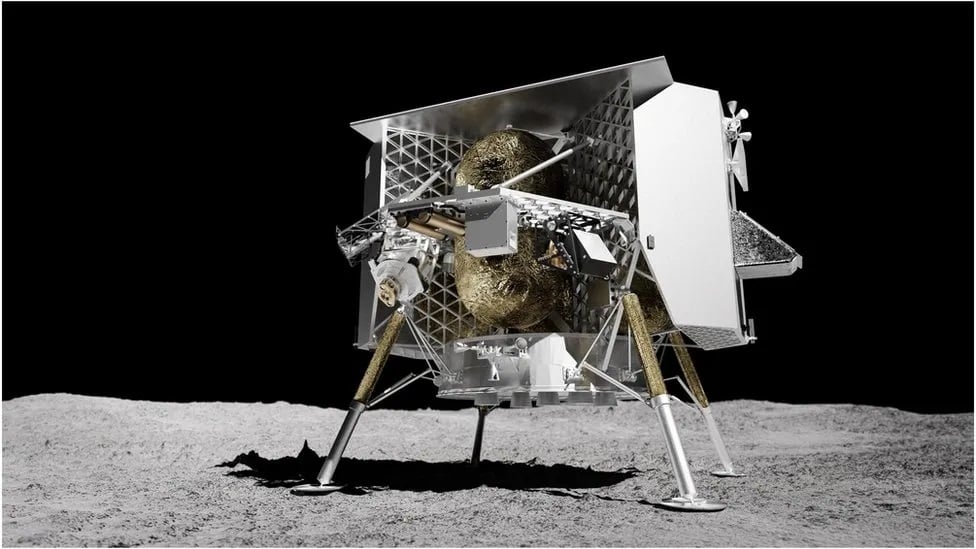
The NASA-backed Peregrine One lander, which was supposed to be the first US object put on the moon for half a century, is hurtling towards Earth.
The lander has failed its objective due to a propellant leak. It is expected to burn up in Earth’s atmosphere on Thursday, but as with any space object, there’s a chance surviving debris could fall back to Earth.
Peregrine One was supposed to serve as a scout for NASA’s Artemis astronauts before they land on the moon in 2026.
Had it reached the lunar surface, it would have deployed scientific hardware to help answer questions about the moon’s surface composition and lunar radiation.
The private firm that developed the machine, Astrobotic, posted on X: “Our latest assessment now shows the spacecraft is on a path towards Earth, where it will likely burn up in the Earth’s atmosphere.”
“The team is currently assessing options and we will update as soon as we are able,” announced the firm.
As of Astrobotic’s latest update on January 14th, the Peregrine One lander is about 234,000 miles away miles from Earth, but it is getting closer and closer.
Based on its current trajectory, Peregrine will re-enter the Earth’s atmosphere on Thursday, January 18th and is likely to burn up. Astrobotic allayed public concerns that any remaining fragments of the lander would hit populated parts of the planet.
“We are working with NASA to continue updating and evaluating the controlled re-entry path of Peregrine,” the firm said in the update. “We do not believe Peregrine’s re-entry poses safety risks. We are validating this through analyses in collaboration with the US government [and will] continue to operate the spacecraft and provide status updates through the end of the mission.”
US mission to the moon encountered problems from the start
The 1.2-ton lander was launched from Cape Canaveral, Florida with the intention of landing in late February. However, in the first few hours of its journey, engineers noticed the would-be Moon lander was struggling to keep its solar panels looking in the direction of the Sun to charge its battery.
The cause was quickly attributed to a major leak in the propulsion system that was pushing Peregrine out of alignment. The US space agency, NASA, had purchased capacity on the lander for five instruments to study the lunar surface environment ahead of sending astronauts there later this decade.
Astrobotic is the first of three US companies to send a lander to the Moon this year under a new private-public partnership with NASA.
Alongside two other commercial ventures – Intuitive Machines and Firefly – they had planned six missions to the lunar surface in 2024. NASA believes its new lunar partnership with the private sector will introduce more innovation and reduce costs over time. The agency says it is prepared for some of these missions to fail.
See all the latest news from Greece and the world at Greekreporter.com. Contact our newsroom to report an update or send your story, photos and videos. Follow GR on Google News and subscribe here to our daily email!



